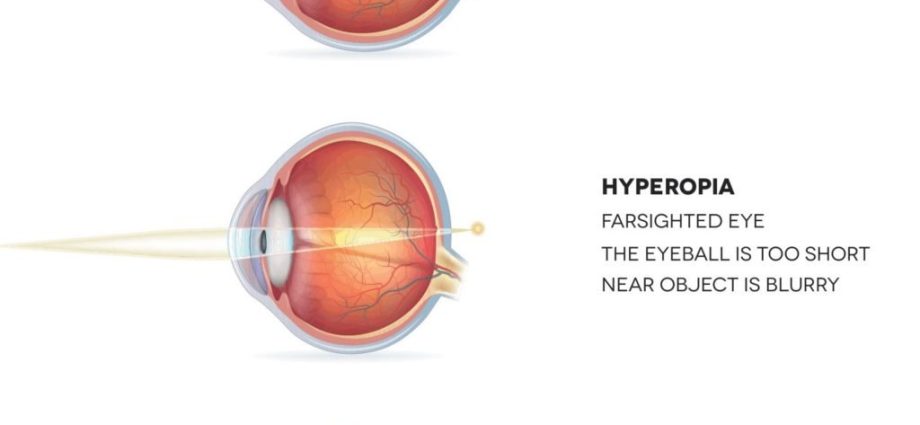Contents
Although contact lenses require more care than glasses, many people are much more comfortable using contact lenses. But you need to choose the right products so that they do not cause harm and are comfortable to use.
Is it possible to wear lenses with farsightedness
Yes, with farsightedness, contact correction is actively used today, helping to correct the refractive power of the eyes, reducing the severity of hypermetropia. With this pathology, the light beam, when passing through the cornea and the lens, is focused not on the retina itself, but behind it, therefore, only distant objects can be clearly seen, and close objects are seen fuzzy, blurry. Therefore, to correct farsightedness, plus lenses are used, which allow you to focus the rays on the retina.
However, with a mild degree of farsightedness, contact lens correction is not recommended, doctors usually prescribe special eye drops, vitamin preparations with antioxidants, and eye exercises to improve vision. The final decision on correction options should always be with the doctor.
Which lenses are best for farsightedness?
With moderate and severe farsightedness, a correction is used with contact lenses made of silicone or hydrogel. They are soft, comfortable to wear and easy to care for. Rigid lenses made of polymer materials are rarely used today.
What type of lens correction will be suitable in each specific situation, it is necessary to decide together with the ophthalmologist. Rigid lenses have a number of advantages, as they are made according to the individual size of the cornea, taking into account all the possible nuances of changes in the patient’s vision. They can be used for six months without replacement (provided that they are fully cared for), but many people may experience discomfort while wearing these lenses, it is more difficult to get used to them.
Soft lenses are considered more comfortable to wear, due to the extensive selection, you can choose lens options to correct any degree of farsightedness.
What is the difference between lenses for farsightedness and ordinary lenses?
Standard contact lenses have the same refractive power. But in the presence of serious, severe near vision impairment, it is necessary to use bifocal or multifocal products that have different refractive power in certain areas of the lens.
Bifocal lenses have two optical areas, they are prescribed to patients who do not have other concomitant visual disorders.
Multifocal lenses help in the correction of farsightedness, which can be combined with the presence of astigmatism or nearsightedness. They have simultaneously several optical regions with different refractive power.
Reviews of doctors about lenses for farsightedness
– The use of contact lenses for farsightedness in young patients gives positive results. This correction is well tolerated and allows for clearer vision compared to spectacle correction. But in the presence of age-related presbyopia, difficulties may arise when using such a correction, – says ophthalmologist Olga Gladkova.
Popular questions and answers
We discussed with ophthalmologist Olga Gladkova issues of choosing a contact correction for farsightedness, clarified some of the nuances of the selection and wearing of products.
Which lens is used to correct farsightedness in the elderly?
With a significant decrease in vision and opaque eye environments (for example, with mature cataracts and corneal cataracts), lenses are ineffective, therefore they are not used.










